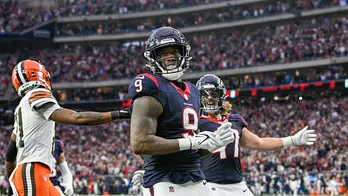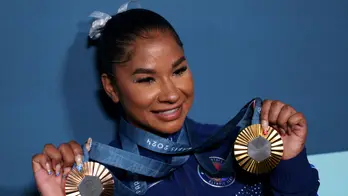Pele is dead, long live the king of football
Pele, the planet’s most famous footballer, the sport’s first superstar and the only player with three World Cup titles, died at the age of 82 on Thursday.

Watch: The Legend Of Pele: How a kid who practiced with jackfruits became a wizard of football
Pele’s death comes 51 years after he last kicked a ball for Brazil (July 18, 1971). It’s been nearly five decades since his last club game, at the Giants’ stadium in New York, a farewell attended by 75,646 that included Robert Redford, Mick Jagger, Henry Kissinger and Muhammad Ali. That means his unquestionable skills — “Pele was everything. Everything you could imagine,” said Mario Zagallo, his teammate in the 1958 World Cup and coach in the successful campaign 12 years later — are not part of lived experience for most.
Yet, like Ali, he is a 20th century sportsperson who occupied our mindspace. The chance to meet him had got his heart beating faster, said former Brazil coach Tite during the 2022 World Cup. Regardless of your religion send him good vibes, said Tite’s assistant and 1998 World Cup runner-up Cesar Sampaio. With tifos and giant posters, Brazil fans and their team showed Pele was in their thoughts in Doha. Pele has a stadium named after him in Brazil and, deep in the throes of a pandemic, there was a proposal in 2021 to rename Rio’s Maracana after him.
So, it wasn’t unusual for Pele to be as prominent as Neymar and Oscar in promoting products during the 2014 World Cup in Brazil. Or, a full house giving him a warm welcome at the Hindustan Times Leadership Summit in 2018.
There, Pele had said he was named after Thomas (Alva) Edison. It isn’t clear how Edison Arantes do Nascimento became Pele but like with the famous inventor, generations have been impacted by the nickname. Named Fifa’s Player of Century, Pele’s record of scoring “over 1200 goals” (according to Fifa) in over 1300 games would have been enough for that.
But phenomenal though they are, Pele is more than the sum of his achievements. In the immediate aftermath of his death, the American artist and film director Andy Warhol’s comment that Pele would have “15 centuries of fame” seems only mildly ironic.
Pele's rise to fame coincided with Brazil’s birth as a modern country, said the nation’s former president Fernando Henrique Cardoso in a Netflix documentary. In 1970, Pele was voted the most famous man in the world.
Watch Video: Former India captain Bhaichung Bhutia in conversation with Pele in HTLS 2018
Seven years later, United Nations made him ‘Citizen of the World’. Soldiers from China came to Hong Kong, then a British territory, to see him. Pele’s claim of a truce in the Biafran War when Santos, his team from 1956 to 1974, visited has been disputed but the fact that a footballer could think that had happened is proof not of him being delusional but of the delirium he generated, which Brazil and Santos milked. New York Cosmos did that too—his first game for them was telecast to 200 countries—and that is how Pele came to India in 1977 to play Mohun Bagan at Eden Gardens.
His presence spurred interest in soccer in USA leading to the country hosting a World Cup and readying for another in 2026. That 16 in the 26-player roster for the 2022 World Cup play in Europe shows that the men’s game continues to grow in USA whose women’s team has reached heights that Pele’s Brazil did. The North American Soccer League, of which Pele’s New York Cosmos was part of, has folded but its successor the Major League Soccer is in good health.
Poverty, Argentina World Cup winner Jorge Valdano had said, is bad for everything but footballers. Pele was born in a two-room house in Tres Coracoes in the state of Minas Gerais to Dona Celeste and Joao Ramos do Nascimento or Dondinho, whose football career was cut short by injury. That made Dona Celeste equate football with bank robbery as Pele has recounted in his biography ‘My Life And The Beautiful Game’.
But through an early life of cutting classes, seining in Rio Bauru, selling meat pastries and stolen peanuts, Pele’s talent for football shone. Dondinho was his first coach and after initial success in Bauru, a city in Sao Paulo, he moved to Santos on advice of Waldemar de Britto, a forward in the 1934 Brazil World Cup team and coach of the juvenile team of the Bauru Athletic Club. Pele was 15 then.
The beginning was far from auspicious. Twice Pele had decided to leave and on both occasions, he ran into an odd-jobs person who got him to return to his lodgings (‘My Life And The Beautiful Game’). Pele’s first contract was worth less than $100 a month.
On September 7, 1956, Pele got his first goal for Santos. Less than two years later, already an international, “a skinny little black boy” (Pele’s words), was scoring for Brazil against Wales in the World Cup. And being part of a 4-2-4 formation—usually Garrincha, Vava, Pele and Zagallo—that showed the world that while the English may have invented the game, the magic came from Brazil.
Like with Santos, the World Cup debut almost didn’t happen. Pele went to Sweden with a knee injury and the team psychologist had deemed him to be too “infantile” for the rigours of competition.
Pele was “gymnastically agile and resilient,” according to the English football journalist Brian Glanville. “A tantalising juggler of the ball, a fine right-foot shot. Above all, his temperament was extraordinary, his coolness in the thick of battle, the most tense and dramatic situation, uncanny.”
With five goals in the knockout rounds of the 1958 finals, Pele showed all that. By 1959, Santos were paying him nearly $100,000 a year. In 1962, injury cut short his World Cup as it did in 1966 where he was brutalised by Portugal’s Jose Morais. Pele had decided to not play the World Cup again but changed his mind closer to the 1970 iteration.
Brazil were still playing four forwards but now the quartet comprised Jairzinho, Rivelino, Pele and Tostao. Like in 1962 and ’66, Pele scored in the opening game, this time chesting a long ball and volleying home against the Czechs. It was his assist for Jairzinho that made the difference in the 1-0 win against England. In the semi-final against Uruguay—the first time the teams were meeting since the 1950 World Cup—Pele drew the defence to him and got Rivelino to score. In the final, he scored the last of 12 World Cup goals (in 14 games) and created two including that lay-off for skipper Carlos Alberto who powered in to score the last goal in the 4-1 win against Italy.
By then, Pele had married, become a father, starred in a Brazilian soap and signed up for a university degree in physical education which he successfully pursued. He was also used by the Brazil’s autocratic regime that had seized power following a coup in 1964. Vava and Didi, Pele’s teammates in the 1958 World Cup, could move to Real Madrid and Atletico Madrid but Pele was declared a national treasure and prevented from going to Europe. Yet, he has referred to Brazil’s authoritarian president Emilio Medici as “an ardent football fan”.
Neither that nor exposes about his personal life nor a failed stint in politics undermined Pele’s popularity. A lot of that is down to—according to Shep Messing, Pele’s teammate at Cosmos—the way he touched those he came in contact with. O Rei, king (in Portuguese) as he was called, was at ease among people.
He also survived bankruptcy by agreeing to new terms with Santos which included playing one year for free. His face was launching a thousand things and he had a long-term deal with a soft drink major. Yet, another bad business decision left him short of money and that was when he took up the Cosmos offer.
Pele played his last professional game in 1977 but continued to be sought after by brands including one claiming to cure erectile dysfunction. From having barely had school education, he became a polyglot. He also worked for UNICEF and has a law in Brazil named after him.
“I was no longer Pele. I was Edson Arantes do Nascimento,” Pele said after his last game. That comment did not stand the test of time. It was, is, and will always be, football’s most famous four-letter proper noun.
Disclaimer: The copyright of this article belongs to the original author. Reposting this article is solely for the purpose of information dissemination and does not constitute any investment advice. If there is any infringement, please contact us immediately. We will make corrections or deletions as necessary. Thank you.







